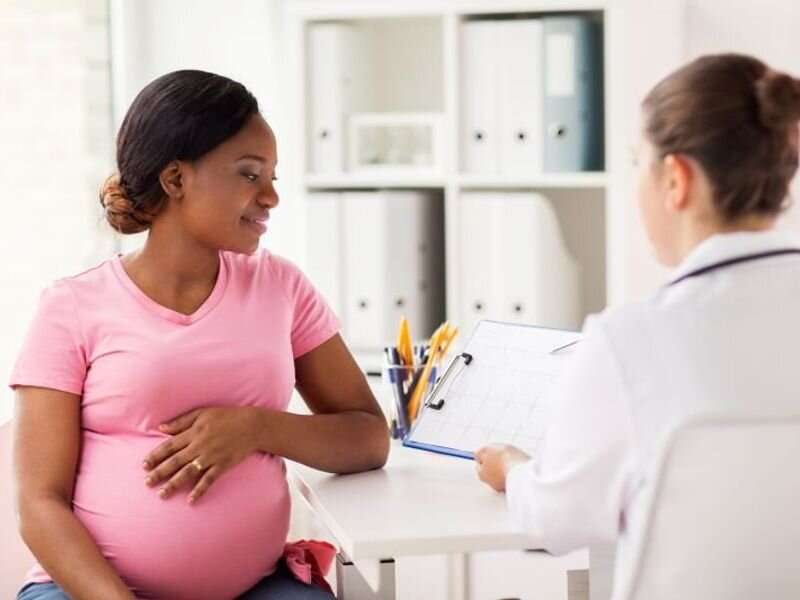This article has been reviewed according to Science X's editorial process and policies. Editors have highlighted the following attributes while ensuring the content's credibility:
fact-checked
peer-reviewed publication
reputable news agency
proofread
Hepatitis C rates soar among pregnant women

In the two decades since the opioid epidemic took off, the addiction crisis has claimed the lives of hundreds of thousands of Americans.
Now, new research points to another grim outgrowth of the crisis on American health: a skyrocketing risk in pregnant women for hepatitis infection (HCV).
That's because the main risk factor for contracting hepatitis C—a liver infection spread by blood contact—is injection drug use.
Between 1998 and 2018, prevalence of HCV among pregnant women shot up 16-fold, researchers found, driving up the risk for poor fetal development and fetal distress, as well as preterm birth.
And that's just the broad picture among pregnant women of all ages. Among those between 21 and 30, hepatitis C risk shot up more than 3000%.
"We do think the increase in HCV infections among pregnant women in our data is concerning," noted lead author Dr. Po-Hung (Victor) Chen, an assistant professor of medicine Johns Hopkins University School of Medicine's Comprehensive Transplant Center in Baltimore.
If anything, he said, concern should be even greater than the number cited in the study might suggest, given that U.S. obstetricians did not routinely screen all pregnant women for HCV during the study period.
"Therefore our findings likely even underestimated the true number of HCV infections among pregnant women in the U.S.," Chen added.
Hepatitis C is the most commonly reported chronic blood-borne infection in the United States, researchers said.
Generally, it is symptom-free, until liver disease sets in. Without timely screening and diagnosis, untreated hepatitis C can lead to liver inflammation, cirrhosis and cancer.
Chen said the link to the opioid crisis stems from the sharing of needles and syringes, given that HCV is spread via blood.
Between 1999 and 2020, more than 564,000 people died from an opioid overdose, according to the U.S. Centers for Disease Control and Prevention.
For this study, Chen's team examined data for more than 70 million women between 18 and 50 who were hospitalized between 1998 and 2018 to give birth or as a result of a miscarriage.
Just over 137,000 tested positive for hepatitis C.
Roughly three-quarters of the infected women were white and about two-thirds were under 31. Nearly 3 in 10 reported opioid use.
By the final year of the study period, researchers found, 5.8 of every 1,000 pregnant women were positive for HCV—a 16-fold increase.
During that two-decade timeframe, pregnant women between the ages of 41 and 50 also saw their hepatitis C risk rise—by 300%.
HCV risk among the largest group of women—those between the ages of 21 and 30—rose much more dramatically, increasing 31-fold (or roughly 3100%).
"These were not merely risks or hypotheticals," Chen emphasized, but actual numbers seen among U.S. women.
While suggesting that evidence of an opioid epidemic-HCV link is "compelling," Chen conceded that this study does not definitively prove that the opioid crisis directly caused the HCV rise seen in pregnant women.
But he added that it indicates that universal HCV screening with each pregnancy makes sense.
"However," Chen added, "Screening is just the first step. We need additional research on best practices for connecting mothers and their infants who screened positive for HCV to specialists who can help them."
The findings were published July 21 in the journal JAMA Network Open.
Dr. David Bernstein is a professor at NYU Grossman School of Medicine and the new director of ambulatory gastroenterology and hepatology at NYU Langone Long Island in New York City.
He said the findings came as no surprise.
"We have been seeing signs of big increases in the prevalence of hepatitis C among young women and men due to the opioid crisis in this country," Bernstein noted. "And since we're not adequately addressing the opioid crisis, we're going to continue to see young women who become pregnant who have hep C. And that's going to place their child at risk of acquiring it at birth."
Bernstein noted that between 3% and 5% of infants born to an HCV-infected mother will have the disease themselves.
The good news: "Once identified, hep C is treatable and curable in more than 95% of people who have the infection," he added.
Even so, Bernstein stressed that the study highlights something that everyone in the field knows: To address risks such as HCV, " a lot more resources" must be invested in addressing the opioid crisis.
"The crisis is only getting worse," he said. "And that's unfortunate. Because this sort of thing is 100% preventable."
More information: Po-Hung Chen et al, Trends in the Prevalence of Hepatitis C Infection During Pregnancy and Maternal-Infant Outcomes in the US, 1998 to 2018, JAMA Network Open (2023). DOI: 10.1001/jamanetworkopen.2023.24770
Copyright © 2023 HealthDay. All rights reserved.


















